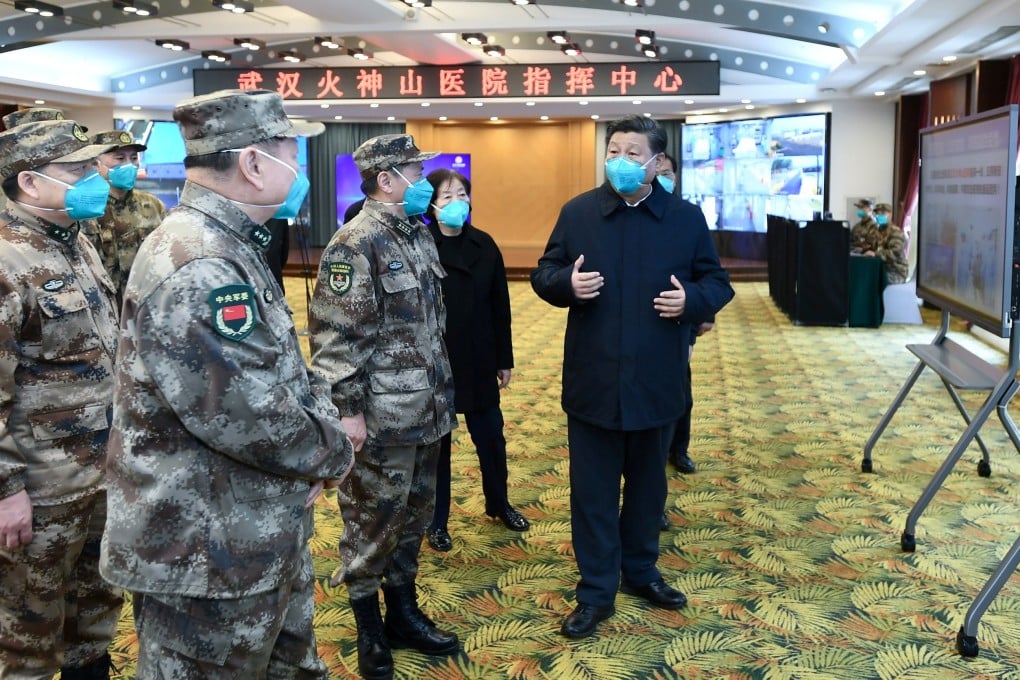How China’s military took a frontline role in the coronavirus crisis
- Chinese President Xi Jinping, who gave army medical teams the heaviest responsibilities, says virus is now ‘basically curbed’ thanks to their efforts
- PLA’s Academy of Military Medical Sciences personnel have decades of experience including tackling Sars, Ebola, and the earthquake that shattered Sichuan in 2008

Last week, Xi – who chairs the powerful Central Military Commission (CMC) – chose the command centre at military-run Huoshenshan temporary hospital as the first stop of his first official trip to the capital of Hubei province the since outbreak began, reaffirming the PLA’s leading role in fighting the contagion.
Since Beijing declared the highest level of medical emergency in Hubei on January 25, the CMC has sent more than 10,000 personnel into the area. The PLA was also armed with more power than local governments to control medical supplies, a sign of the central government’s determination to contain the spread of the virus.

The first batch of 1,400 military personnel was sent to Huoshenshan on February 4, two days after the hospital was completed. The 25,000-square-metre complex was built within 10 days and provides 1,000 critical care beds.